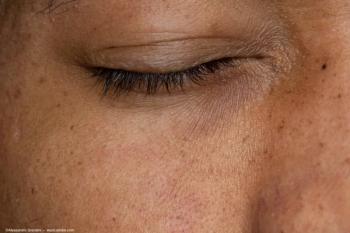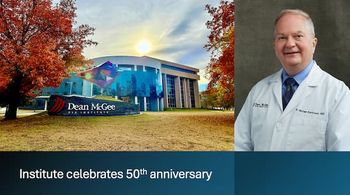
Localized carboplatin therapy studied for retinoblastoma
Fort Lauderdale, FL—A new study offers hope that the serious adverse effects of carboplatin chemotherapy for retinoblastoma could be minimized by local delivery in a fibrin sealant sustained-release vehicle.
Fort Lauderdale, FL-A new study offers hope that the serious adverse effects of carboplatin chemotherapy for retinoblastoma could be minimized by local delivery in a fibrin sealant sustained-release vehicle.
Kurtis Van Quill, BA, reported the results of his group's research at the annual meeting of the Association for Research in Vision and Ophthalmology. In a murine model of the disease, a single subconjunctival injection of carboplatin in fibrin sealant resulted in complete or near-complete tumor regression in 10 (91%) of 11 eyes with no histopathologic evidence of toxicity.
Carboplatin is the most effective chemotherapy for retinoblastoma, but the drug can cause serious adverse effects when delivered intravenously. These systemic toxicities can be minimized by administering the drug locally. Previous studies of subconjunctival carboplatin in aqueous vehicle have shown that this approach controls tumor growth in murine retinoblastoma, and, in primates, results in higher vitreous drug levels compared with intravenous administration, Van Quill said.
Subconjunctival carboplatin in aqueous vehicle has also been tested in patients with retinoblastoma and will be evaluated as an adjuvant to systemic combination chemotherapy in an upcoming NCI-sponsored phase III clinical trial.
However, this modality has been associated with serious local toxicities, including enophthalmos, decreased ocular motility, orbital fat necrosis, and orbital soft-tissue adhesions. Rather than reaching target tissues, most of the carboplatin delivered in aqueous media is dispersed quickly throughout the extraocular tissues, exposing them to high drug concentrations and potentially to acute toxicities, Van Quill explained.
Reduction of local toxicity
"We propose to increase therapeutic efficacy and to reduce local toxicity of subconjunctival carboplatin by incorporating the drug into a fibrin sealant sustained-release vehicle. Fibrin sealant is an FDA-approved surgical adhesive that is administered like epoxy glue in a dual-chamber syringe. The separate constituents, including fibrinogen and thrombin, react to form a clot at the injection site," he explained. "Carboplatin can be overloaded well beyond its solubility limit in the fibrin sealant, which releases the drug gradually as the sealant is degraded by the body over time.
"By keeping the carboplatin in place against the sclera, the fibrin sealant should maximize scleral drug exposure, extend the duration of therapeutic transscleral drug penetration, and reduce the need for repeated intraocular injections with their associated risk for globe perforation and disease spread. By delivering carboplatin more efficiently to intraocular tissues, fibrin sealant should also minimize local toxicities," he said.
Van Quill and colleagues evaluated the therapeutic effects of this approach in LHβ-Tag transgenic retinoblastoma mice. Three groups of 11 10-week-old mice received one subconjunctival injection in the right eye only. One group received low-dose (37.5 mg/ml) carboplatin in fibrin sealant, one group received high-dose (75 mg/ml) carboplatin in fibrin sealant, and the third group received only fibrin sealant. The injection volume was 30 μl. The animals were killed 3 weeks later, and the eyes were serially sectioned for histopathologic analysis of ocular tumor burden.
"The best therapeutic response was found in the low-dose carboplatin group. There was no histopathologic evidence of toxicity, and six of the 11 eyes had zero tumor burden. Thus, we achieved a cure in more than half of the eyes in this group. Four of the five remaining eyes in the low-dose group had minimal tumor burden, analogous in size to tumor in children that can be cured by focal therapy alone. The eleventh eye in this group had moderate tumor burden, analogous to tumor in children that requires additional chemoreduction with focal therapy for cure. The mean tumor burden in the low-dose group was significantly smaller than mean tumor burden in untreated eyes in the same mice (p < 0.004), sealant-treated control eyes (p < 0.004), and untreated control eyes (p < 0.002)," Van Quill reported.
While a similar reduction in mean tumor burden was observed in eyes treated with high-dose carboplatin, significant toxicities were also observed in this group, according to Van Quill. Six of 10 eyes analyzed in this group had no tumor burden, but five of these six eyes also demonstrated severe, blinding toxicity. Only one eye in the group had no tumor burden and no toxicity.
Newsletter
Don’t miss out—get Ophthalmology Times updates on the latest clinical advancements and expert interviews, straight to your inbox.


















































.png)


